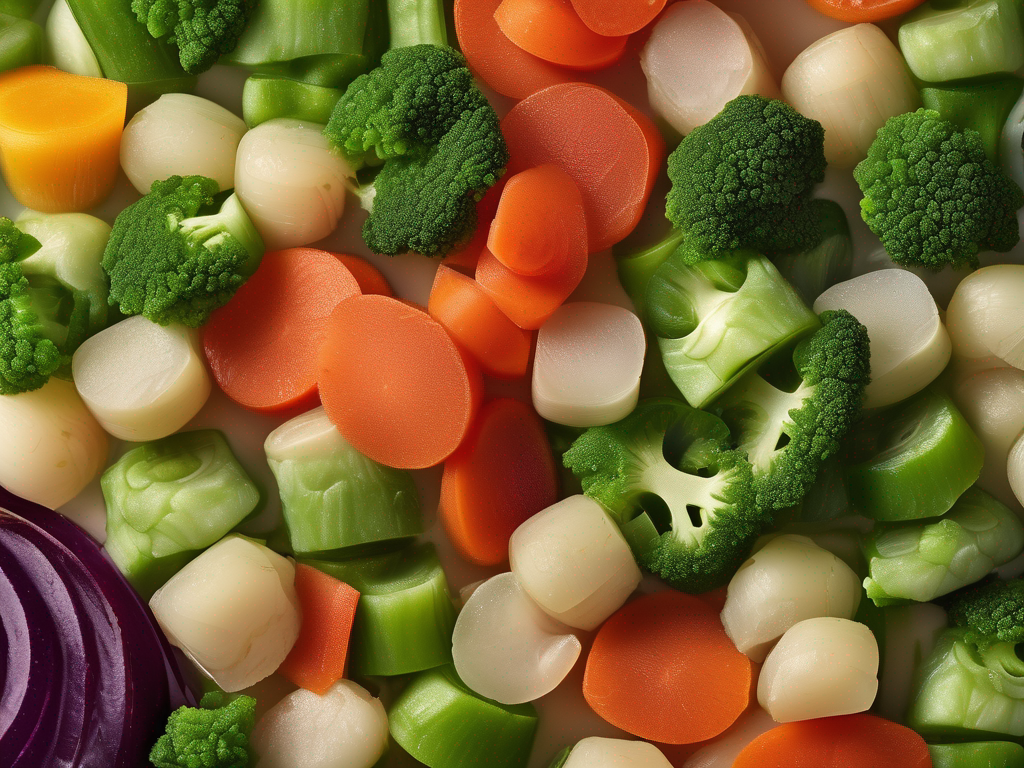
How to Tell If Frozen Mixed Vegetables Have Gone Bad
Get Your Free Food Safety Cheat Sheet
30 most common foods with instant answers. Print it and stick it on your fridge—completely free!
How to Tell If Frozen Mixed Vegetables Have Gone Bad
Frozen mixed vegetables are a convenient and versatile option to have on hand for quick and easy meal preparation. However, like any perishable food item, it's essential to know how to determine if they have gone bad to avoid foodborne illnesses. In this blog post, we will discuss the signs to look for to identify spoilage in frozen mixed vegetables. (Frozen mixed vegetables)
Understanding the Shelf Life of Frozen Mixed Vegetables
Frozen mixed vegetables typically have a long shelf life when stored properly in the freezer. The quality of the vegetables can deteriorate over time, but they do not necessarily become unsafe to consume. However, it's crucial to be able to distinguish between changes in quality and signs of spoilage.
Factors That Affect the Shelf Life of Frozen Mixed Vegetables
Several factors can impact the shelf life of frozen mixed vegetables, including:
- Temperature fluctuations in the freezer
- Exposure to air or moisture
- Packaging integrity
- Storage conditions
Proper storage is key to maintaining the quality and safety of frozen vegetables. Freezer burn, which occurs when moisture evaporates from the food, can affect the texture and taste of the vegetables but does not necessarily make them unsafe to eat.
Signs That Frozen Mixed Vegetables Have Gone Bad
It's essential to inspect frozen mixed vegetables before preparing or consuming them. Here are some common signs that indicate the vegetables have gone bad:
1. Ice Crystals or Freezer Burn
- Presence of large ice crystals on the vegetables
- White or grayish patches on the surface of the vegetables
- Changes in texture, such as dry or shriveled pieces
2. Off Odor
- Foul or off-putting smell coming from the package
- Rancid or sour odor that is not typical of fresh vegetables
3. Discoloration
- Unusual or dark discoloration on the vegetables
- Mold growth on the surface of the vegetables
- Slimy or mushy texture
4. Taste Test
- If the vegetables have an off taste or flavor that is different from their usual taste, do not consume them.
5. Expiration Date
- Check the expiration date on the packaging and discard the vegetables if they have exceeded the recommended storage time.
Safety Tips for Handling Frozen Mixed Vegetables
To ensure the safety and quality of frozen mixed vegetables, follow these tips for proper handling and storage:
-
Inspect the Packaging: Check for any tears, punctures, or signs of damage that may have compromised the integrity of the packaging.
-
Maintain Proper Freezer Temperature: Keep the freezer temperature at 0°F (-18°C) or below to prevent the growth of harmful bacteria.
-
Rotate Stock: Use the oldest packages of frozen vegetables first to ensure they are consumed before their quality begins to deteriorate.
-
Avoid Thawing and Refreezing: Once frozen vegetables have thawed, do not refreeze them as this can lead to bacterial growth and spoilage.
-
Store Properly: Keep frozen mixed vegetables in the coldest part of the freezer and away from the door to maintain a consistent temperature.
Conclusion
In conclusion, being able to identify the signs of spoilage in frozen mixed vegetables is essential for ensuring food safety. By understanding the factors that can affect the quality of frozen vegetables and following proper storage guidelines, you can enjoy these convenient and nutritious ingredients with peace of mind. Remember to always trust your senses and err on the side of caution if you suspect that frozen vegetables may have gone bad.
For more information on [frozen mixed vegetables](/food/frozen mixed vegetables) and food safety tips, visit our website. Stay safe and enjoy your meals! (Frozen mixed vegetables)
Authoritative Food Safety References
These agencies and university labs inform every tip and health precaution we publish.
USDA FoodKeeper – Cold Storage Guidelines
Official refrigerator, freezer, and pantry timelines maintained by the U.S. Department of Agriculture.
Visit USDA FoodKeeperFDA Produce Safety Rule & Grower Guidance
Field-to-fridge handling practices that prevent contamination of fruits, vegetables, and leafy greens.
Visit FDA Produce SafetyCDC Foodborne Illness Prevention Hub
Surveillance-backed guidance on pathogens, symptoms, and steps to reduce foodborne illness risk.
Visit CDC Food SafetyUC Davis Postharvest Technology Center
University research detailing optimal storage atmospheres for produce after harvest.
Visit UC Davis PostharvestPenn State Extension – Home Food Preservation & Safety
Peer-reviewed extension bulletins on safe canning, chilling, and reheating practices.
Visit Penn State ExtensionGet Your Free Food Safety Cheat Sheet
30 most common foods with instant answers. Print it and stick it on your fridge—completely free! Want more? Upgrade to the complete guide with 70+ foods.
Scan your food directly and get instant safety info using our AI-powered camera feature.